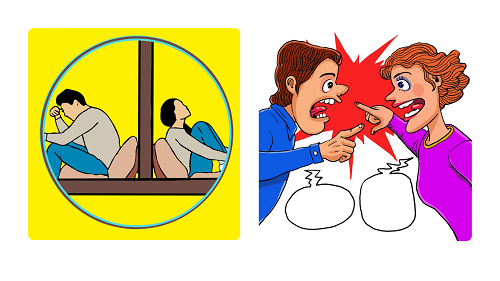Introduction:
Toxic relationships can have a detrimental impact on our mental and emotional well-being. Recognizing the signs of toxicity and learning how to navigate these relationships is essential for our overall happiness and mental health. In this guide, we’ll discuss how to identify toxic relationships, establish healthy boundaries, and prioritize self-care to overcome toxicity and cultivate healthier connections.
1. Understanding Toxic Relationships:
1.1 What are Toxic Relationships?– Toxic relationships are characterized by behaviors that are harmful, manipulative, or emotionally draining.
1.2 Signs of Toxicity:
– Manipulation, gaslighting, constant criticism, lack of respect, and emotional or physical abuse are common signs of toxicity.
2. Recognizing Toxic Dynamics:
2.1 Types of Toxic Relationships:
– This can include toxic friendships, romantic relationships, family dynamics, or even toxic work environments.
2.2 Red Flags to Watch Out For:
– Lack of communication, controlling behavior, jealousy, and feeling drained or anxious after interactions are warning signs of toxicity.
3. Establishing Healthy Boundaries:
3.1 Importance of Boundaries:
– Boundaries are essential for protecting our mental and emotional well-being and defining what is acceptable behavior in our relationships.
3.2 Setting Boundaries:
– Clearly communicate your needs, values, and limits to the other person. Be assertive in enforcing these boundaries and prioritize your own well-being.
4. Strategies for Overcoming Toxicity:
4.1 Limit Contact:
– Distance yourself from toxic individuals whenever possible, especially if they consistently disregard your boundaries.
4.2 Seek Support:
– Surround yourself with supportive friends, family members, or a therapist who can provide guidance and validation as you navigate difficult relationships.
4.3 Practice Self-Compassion:
– Be kind to yourself and recognize that it’s okay to prioritize your own needs and well-being, even if it means distancing yourself from toxic people.
4.4 Focus on Healing:
– Engage in activities that bring you joy and promote self-care, such as exercise, hobbies, journaling, or meditation. Take time to heal and rebuild your self-esteem after leaving a toxic relationship.
5. Moving Forward:
5.1 Learning from the Experience:
– Reflect on what you’ve learned from the toxic relationship and how you can apply these lessons to future connections.
5.2 Cultivating Healthy Relationships:
– Surround yourself with people who respect and support you, and strive to build healthy, reciprocal relationships based on trust, communication, and mutual respect.
Conclusion:
Recognizing and overcoming toxic relationships is a challenging but essential aspect of maintaining our mental and emotional well-being. By understanding the signs of toxicity, establishing healthy boundaries, and prioritizing self-care, we can navigate difficult relationships and cultivate healthier connections moving forward. Remember, you deserve to be treated with respect and kindness in all your relationships, and it’s okay to prioritize your own well-being.

